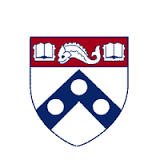What do they do?
Design or configure wired, wireless, and satellite communications systems for voice, video, and data services. Supervise installation, service, and maintenance.
Also known as:
Communications Engineer, Engineer, Infrastructure Engineer, Network Engineer, Registered Communications Distribution Designer (RCDD), Telecommunication Design Analyst (Telecom Design Analyst), Telecommunication Design Engineer (Telecom Design Engineer), Telecommunication Engineer (Telecom Engineer), Telecommunication Systems Designer (Telecom Systems Designer), Telecommunications Consultant (Telecom Consultant)
-
0.2%
Change
Ranks #44 in job growth rate270Job Openings
Ranks #17 in net job growth
Looking for colleges that offer a specific major? Use the College Match Tool to find your best-matched schools and discover your estimated Net Price!
- Bachelor's degree (42%)
- Some college, no degree (21%)
- Associate's degree (16%)
- Master's degree (14%)
- High school diploma equivalent (6%)
- Doctorate or Professional Degree (1%)
- Less than high school diploma (<1%)
Most Popular Majors that prepare Telecommunications Engineering Specialists
-
#1
-
Degrees Granted
43,519
-
Female Students
10,081
-
Male Students
33,438
-
Median Starting Salary
$53,000
-
-
#2
-
Degrees Granted
26,582
-
Female Students
7,295
-
Male Students
19,287
-
Median Starting Salary
$54,033
-
-
#3
-
Degrees Granted
12,349
-
Female Students
2,091
-
Male Students
10,258
-
Median Starting Salary
$64,700
-
-
#4
-
Degrees Granted
6,169
-
Female Students
1,092
-
Male Students
5,077
-
Median Starting Salary
$46,900
-
-
#5
-
Degrees Granted
2,419
-
Female Students
401
-
Male Students
2,018
-
Median Starting Salary
$50,800
-
People in this career often have these skills:
- Reading Comprehension - Understanding written sentences and paragraphs in work-related documents.
- Active Listening - Giving full attention to what other people are saying, taking time to understand the points being made, asking questions as appropriate, and not interrupting at inappropriate times.
- Critical Thinking - Using logic and reasoning to identify the strengths and weaknesses of alternative solutions, conclusions, or approaches to problems.
- Active Learning - Understanding the implications of new information for both current and future problem-solving and decision-making.
People in this career often know a lot about:
- Telecommunications - Knowledge of transmission, broadcasting, switching, control, and operation of telecommunications systems.
- Computers and Electronics - Knowledge of circuit boards, processors, chips, electronic equipment, and computer hardware and software, including applications and programming.
- Engineering and Technology - Knowledge of the practical application of engineering science and technology. This includes applying principles, techniques, procedures, and equipment to the design and production of various goods and services.
- English Language - Knowledge of the structure and content of the English language including the meaning and spelling of words, rules of composition, and grammar.
- Mathematics - Knowledge of arithmetic, algebra, geometry, calculus, statistics, and their applications.
- Customer and Personal Service - Knowledge of principles and processes for providing customer and personal services. This includes customer needs assessment, meeting quality standards for services, and evaluation of customer satisfaction.
- Administration and Management - Knowledge of business and management principles involved in strategic planning, resource allocation, human resources modeling, leadership technique, production methods, and coordination of people and resources.
People in this career often have talent in:
- Oral Comprehension - The ability to listen to and understand information and ideas presented through spoken words and sentences.
- Oral Expression - The ability to communicate information and ideas in speaking so others will understand.
- Problem Sensitivity - The ability to tell when something is wrong or is likely to go wrong. It does not involve solving the problem, only recognizing that there is a problem.
- Written Comprehension - The ability to read and understand information and ideas presented in writing.
- Near Vision - The ability to see details at close range (within a few feet of the observer).
- Information Ordering - The ability to arrange things or actions in a certain order or pattern according to a specific rule or set of rules (e.g., patterns of numbers, letters, words, pictures, mathematical operations).
People in this career often do these activities:
- Collaborate with others to determine design specifications or details.
- Coordinate project activities with other personnel or departments.
- Update knowledge about emerging industry or technology trends.
- Evaluate new technologies or methods.
- Analyze project data to determine specifications or requirements.
- Implement security measures for computer or information systems.
- Maintain contingency plans for disaster recovery.
- Conduct research to gain information about products or processes.
- Identify information technology project resource requirements.
- Document operational procedures.
- Install computer software.
- Install computer hardware.
- Coordinate software or hardware installation.
- Teach others to use computer equipment or hardware.
- Create electronic data backup to prevent loss of information.
- Test computer hardware performance.
- Evaluate project designs to determine adequacy or feasibility.
- Monitor the performance of computer networks.
- Analyze security of systems, network, or data.
- Maintain the inventory of equipment.
- Document technical specifications or requirements.
- Troubleshoot issues with computer applications or systems.
- Provide technical support for computer network issues.
- Document operational activities.
- Estimate time or monetary resources needed to complete projects.
- Maintain computer hardware.
- Develop models of information or communications systems.
- Document network-related activities or tasks.
This page includes data from:

 Occupation statistics: USDOL U.S. Bureau of Labor Statistics Occupational Employment Statistics
Occupation statistics: USDOL U.S. Bureau of Labor Statistics Occupational Employment Statistics






















